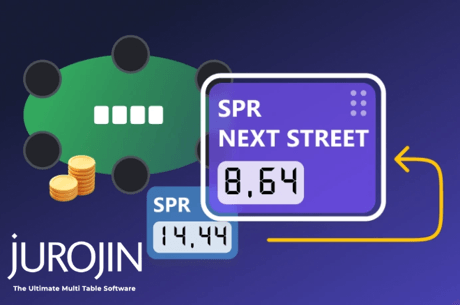Tommy Angelo Presents: Auto-Fold Ranges − A Tool for Fixing Your Poker

No matter how you play, or what games you play, scrutinizing your auto-fold ranges is likely to shake up your strategies and improve your self-awareness. It's like getting your blood tested. Immediate causes for concern show themselves. And you collect baseline data, useful for spotting unhealthy aberrations.
What Are Auto-Fold Ranges?
Auto-fold ranges are hands you always intend to fold before the flop in a given situation. For example, at hold'em, if you intend always to fold 8-3 offsuit under the gun no matter how your opponents are playing, then that hand goes in your auto-fold range for "hold'em, under the gun."
Auto-fold poker ranges are player independent because they are defined by position and prior action. (And possibly stack sizes, if they are short.)
The hands outside of your auto-fold range make up your "it depends" range. With those hands, you might fold, you might call, or you might raise, depending on player tendencies and other variables.
Lopping Off Your C-Game
Think of your auto-fold charts as a watertight seal that keeps you from leaking. This drill will force you to come up with reasoning, however whimsical or sound, for choosing which hands always to fold. And this tough task will reveal to you which plays you make that you think you should never make.
It's your big blind. The button opens. He could have any hand. The small blind folds.
What's the worst nine-high hand you should defend with? 9-8? 9-7? 9-4? What about suitedness?
When you do this exercise, you are not in search of ultimate poker correctness. This is more important than that. You are rooting out your C-game, so you can lop it off.
Imagine yourself writhing in poker despair. Every big pair, cracked. Every flush draw either misses, or you get there and get felted. For days.
What if…
What if no matter how many losing hands or losing sessions you had in a row, you always honored your auto-fold ranges? How many drippy leaks would that plug over a lifetime? Hundreds? Thousands?
What if you played every session watertight? No preflop leaking. What would that do to your score?
Do you think you could do it?
I don't know either. But I do know you can't plug your leaks unless you know where they are. So you'd best get busy.
Three More Benefits
- By knowing which of your preflop decisions are player independent, you increase accuracy and conserve bandwidth.
- By examining each position's folding policies, you raise your positional awareness.
- By taking snapshots of your current ways, you'll have them for later reference and amusement.
Instructions

The table of preflop situations shows positions along the top and prior actions down the side. It depicts 40 different preflop situations. This covers most everything except 4-bet pots and 5-bet pots, and you could add those if you like. You could also add granularity to the early positions. This is your sandbox.
Charts and tables are here:
Auto-Fold Spreadsheet in Excel − this is a downloadable file
Auto-Fold Spreadsheet in Google Sheets − this is a link to the cloud
To print, use either link, and click print.
To do the deed electronically, type into the spreadsheets.
The Steps
Choose a situation from the Table of Preflop Situations, such as "cutoff, no one in."
Sit down with a blank range chart (paper or electronic).
Assign a number to the new chart (1, 2, 3, etc.). That number will go in the appropriate square in your table of preflop situations.
Fill in the game, position, and prior action information at the top of the range chart.
Then do this:
Mark the hands you think you should always fold.
And that's your auto-fold range for that situation. The other hands are your it-depends range.
To mark your auto-fold hands in a spreadsheet, you can use bolding and/or coloring and/or cell shading.
Filling in a chart is a simple task. But not easy. It's hard to decide on which hands to mark.
There's another way to do the same thing, from the opposite direction. Start with a blank chart and mark every hand that you might want to play in that spot against weak opponents. Now step back and look at the range of hands you did not select. And that's your auto-fold range for that situation.
Both methods of discovery provide enlightened views. In theory, they should produce the same ranges.
When you have finished filling in a range chart, put the chart number into the squares it applies to in the situations table.
Then do that 39 more times.
It's not as arduous as it sounds because you'll find yourself using some ranges more than once. It turns out I use only 4 ranges for all 40 squares. For example, this is my Table of Preflop Situations table for live NLHE cash games, filled in, so you can see what the end product looks like:

I wonder how many auto-charts you'll end up with?
I'll be returning to this subject in the near future in a subsequent article spelling out "My Auto-Fold Ranges." Meanwhile, I recommend that you not do this exercise all at once. Spread it out. Fill in a few squares in the table, go play poker, then do a few more squares, and so on. Carry your new ideas from your desk to the poker table in small buckets.

World-class coach and author Tommy Angelo is now offering poker pain relief to everyone. You can schedule a call to talk to Tommy about bad betting, bad quitting, bad tempers, or whatever else is hurting your game. Just go to tommyangelo.com. Angelo's first book, Elements of Poker, was called "the seminal poker text of the 21st century" by The London Times, and it has revolutionized the way serious players approach the game.









